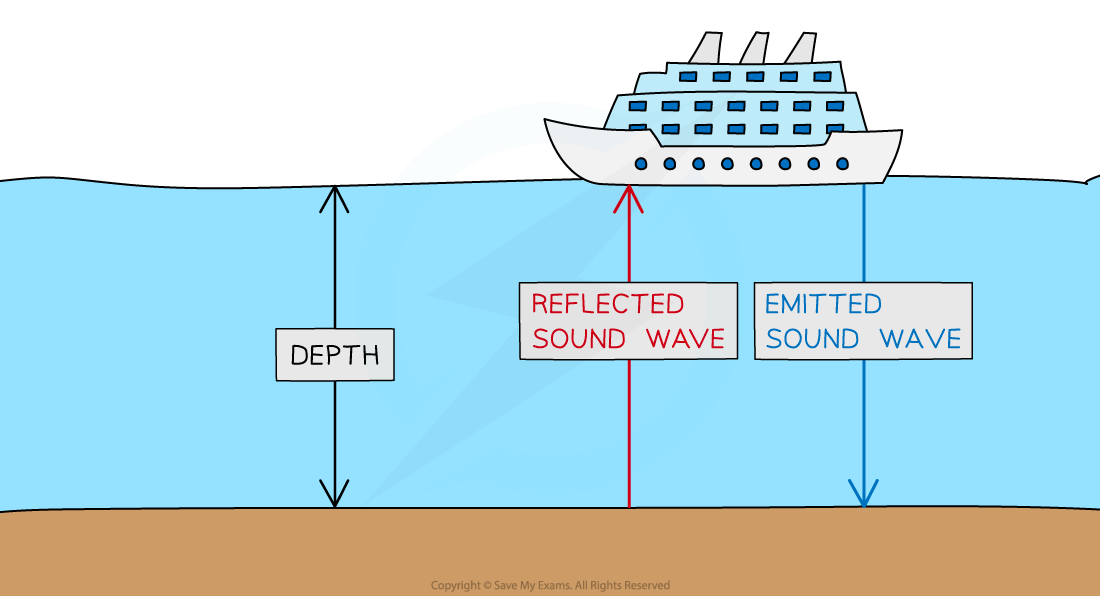Seismic Waves (OCR GCSE Physics A (Gateway))
Revision Note
Seismic Waves
Higher Tier Only
Earthquakes produce two types of waves:
P-waves (primary waves)
S-waves (secondary waves)
These waves pass through the Earth’s centre and can be detected at various points around the Earth using seismometers
By carefully timing the arrival of the waves at each point, the location of the earthquake, along with its magnitude, can be pinpointed
P-Waves
P-waves are longitudinal waves
These waves can pass through solids and liquids
P-waves are faster than S-waves
They are very low frequency sound waves known as infrasound
Infrasound is any sound below the frequency of human hearing (<20 Hz)
The waves refract as they pass through the different layers of the Earth
This refraction affects the regions in which waves can be detected, yielding important information about the nature and size of the Earth’s various layers

Low frequency sound waves (P-waves) produced by earthquakes, pass through the centre of the Earth, revealing useful information about its structure
S-Waves
S-waves are a type of transverse wave
Unlike P-waves, S-waves are unable to travel through liquids
They pass through solids only
S-waves are slower than P-waves
This means that they are unable to travel through the Earth’s molten (liquid) outer core – providing important evidence about its state and size

Transverse S-Waves are unable to pass through the Earth’s liquid outer core
Exploring The Structure of The Earth Using Waves
The interior of the Earth is not directly observable as it is not physically possible to drill that far
The furthest humans have managed to drill down is 12.2 km - whereas the radius of the Earth is over 6000 km!
Seismic waves provide vital evidence that has led to a greater understanding of the structure of the Earth
The two main discoveries are:
On the opposite side of the Earth to an earthquake, only P-waves are detected, not S-waves, this suggests:
The mantle is solid – this is because both types of wave can pass through it
The outer core of the Earth is liquid – hence no S-waves can penetrate it
Refractions between layers cause two shadow zones, where no P-waves are detected, this suggests:
The inner core is solid – this is due to the size and positions of these shadow zones which indicate large refraction taking place
Exploring Objects in Deep Water
Waves can also be used to image objects in deep water
This is a process known as sonar
Sonar uses ultrasound to detect objects underwater
The sound wave is reflected off the ocean bottom
The time it takes for the sound wave to return is used to calculate the depth of the water
This is the distance to the ocean floor plus the distance for the wave to return the distance the wave travels is twice the depth of the ocean

Sonar is used to determine water depth
Worked Example
The sound wave released from a ship took 0.12 seconds to return. The speed of sound in water is 1500 m/s.
What was the depth of the sea?
Answer:
Step 1: List the known quantities
Wave speed, v = 1500 m/s
Time, t = 0.12 s
Step 2: Write out the wave speed, distance and time formula
Step 3: Rearrange the equation to make distance (x) the subject
x = v × t
Step 4: Put known values into the equation
x = 1500 × 0.12 = 180 m
Step 5: Half the distance to obtain the depth
d = 180 ÷ 2
Depth, d = 90 m
Examiner Tips and Tricks
Don't forget to take into account that the sound wave has travelled twice the distance.
You can do this one of two ways:
Halve the time at the beginning, or
Halve the distance at the end

You've read 0 of your 5 free revision notes this week
Sign up now. It’s free!
Did this page help you?
